The major challenges of artificial intelligence
- Claude Gauthier
- Jan 2
- 6 min read

Portraits of the Belamy family
Edmond de Belamy and his family made their grand entrance into the media world in 2018. In the form of a family tree, eleven members of the family were officially presented through paintings illustrating each member, painted according to their noble rank and era.
The event attracted the attention of the world press, not because of the originality of the portraits, nor because of the fame or influence of the family over the centuries, but for an unusual reason. The portrait of Edmond is created in the style of Rembrandt, the undisputed master of portraiture. It was put up for sale by Chrisite's for 7,000 euros and found a buyer for $383,000 euros.

The excitement surrounding Balamy's family has set social networks and the media ablaze. This reaction is understandable: the family is a unique artistic expression created entirely by artificial intelligence, one of the first credible manifestations of the creative capacity of artificial intelligence in the artistic field.
Deep learning techniques were used to create the Belamy family. The Paris-based “Obvious Collective” undertook to analyze more than 15,000 paintings from different periods using algorithms. Using computers fed with these paintings, other algorithms generated original images that looked as if they had been produced by a human.
Edmond de Belamy was not the first

Earlier in 2016, an Amsterdam-based research group had already published a portrait entirely compiled from a database of 168,263 fragments of Rembrandt paintings analyzed by algorithms. Entitled “The Next Rembrandt,” this painting created entirely by AI surprised the world with the precision of the rendering and the affiliation to Rembrandt’s work. Already, the message was clear: artificial intelligence offers creative tools capable of opening new frontiers in the field of artistic production. The criteria used to generate “The Next Rembrandt” included the following constraints: a portrait format with the face turned to the right, a Caucasian male model with facial hair, aged 30 to 40, wearing dark clothing, a collar and a hat. Without claiming to have created a new Rembrandt, the result took art history experts by surprise and officially demonstrated the power of AI.
Even the experts are confused.
In April 2023, German photographer Boris Eldagsen submitted an image to the 2023 Sony World Photography Awards / SWPA competition, in the creativity category, unsolicited. His image was titled "The Electrician". The image depicts 2 women side by side, using a photographic rendering typical of the style of the pictorialism period. For reference, over 450,000 photos were submitted to the competition.

This is how Eldagsen won the first prize for creativity in the competition. But this image had been created from scratch by Artificial Intelligence. Eldagsen had not sought to deceive the jury: he had titled the series from which the image was taken "Pseudommesia", a Latin term meaning a false memory, an encounter that never took place, as opposed to an altered memory.
As the winner, Eldagsen informed the jury that his image was a creation inspired by the visual language of photography, generated entirely by AI and that he refused the prize he had won. This was enough to start a controversy and claim deception.
However, this is the first time that an AI-generated image has won an award in a renowned competition, with a jury of experts, without their knowledge. Many have concluded that AI-generated imagery has officially entered the artistic world and that the technique is here to stay: an original work using the language of photography created without the aid of a camera.
One can well understand the anxiety of future juries of photography competitions, more preoccupied with asking themselves whether the work presented to them was produced by means of a camera or not. This hesitation will be to the detriment of the qualities of creativity and originality that should guide a jury in its decision.
The door is now wide open
Since that memorable date, artificial intelligence has continued to gain momentum in the field of artistic visual creation. In the field of photographic post-processing, work tools are commonplace: they have become essential, both in terms of processing productivity and creative aids. In the field of image creation, we are witnessing a rapid evolution of images produced using written commands, but still in start-up mode. We can certainly think that the most impressive is yet to come.
To illustrate the creative capacity of AI at the moment (2023), here is a series of original photographs (therefore without copyright attracted, other than those potentially claimed by the person who distributes these images) created from scratch by Microsoft's Bing application, with the following command: "mountains with cloudy sky, river in the foreground, in the style of Ansel Adams".
AI in Film Production
Powerful tools are already well established and used by film production teams. But for years, the use of AI has become routine for filming, special effects production and post-production processing.
These tools will gradually be democratized and will soon become available to video production teams and photographers.
But what are the questions raised by the major upheavals caused by the arrival of these technologies? This is a question that will fuel the visual imagery creation industry for years to come.
Ethical considerations
The accelerated trend towards the use of AI undoubtedly brings us to the front lines of creator ethics. These questions are already apparent in the world of literature. The world of photography will be exposed to them head on.
As we all know, computers and AI do not create: they generate images or offer image processing in connection with their vast image database integrated with their ever-increasing processing capacity. It is an extraordinary compilation mechanism, not creation. But the results can be misleading.
The issue of copyright is at the forefront of discussions. Each fragment recorded in the immense memories of artificial intelligence systems can be used to produce a supposedly unique image. In doing so, the process can trigger a challenge request from a rights holder claiming that his rights have been usurped.
The approach associated with the use of AI challenges the notion of beauty, the communication of emotions, essentially human concepts that distinguish us. Since the very beginnings of civilization, humans have aspired to communicate the notion of beauty, according to the era, influences and culture that are specific to them. To this day, this creative research is the motivation of every artist who seeks to share the notion of beauty. It appears that AI is becoming a competitor in this quest, and that the ability to quickly learn algorithms could make the process untenable for humans.
The control of forgers over image generation is a source of concern that can lead us to lose sight of the great principles of democracy. If no one can validate the integrity of information, we will have to make decisions based on our personal beliefs. Groups able to influence public opinion will have free rein to deploy their increasingly sophisticated and deceptive arsenal. The integrity of the photos produced by photojournalists will be constantly called into question, because for every honest journalist, hundreds of unscrupulous image creators will be at work in order to support a propaganda approach.
A telling illustration of this trend is the creation of an imaginary photo essay by world-renowned photojournalist Michael Christopher Brown . Using Midjourney, he created a pseudo-reportage of 400 photos illustrating the exodus of Cubans to Florida during the revolution as if he had been present with the refugees. This move by a credible photojournalist has been strongly contested, indicating that such an initiative can only negatively affect the credibility of journalism.

The challenges that artificial intelligence poses to our society are new and without parallel in our historical experience. Only a clever person can predict what the coming years will bring in the field of photographic creation.
References
Is artificial intelligence set to become art's next medium? Christie's Photograph & Prints, Interview, December 2018
A sign of things to come? AI-produced artwork sells for $433K, smashing expectations , CNN October 2018.Allyssia Alleyne, CNN
New Rembrandt' to be unveiled in Amsterdam, The Guardian, April 2016
Artist Refuses Prize After His AI Image Wins at Top Photo Contest, PetaPixel, April 2023
Photojournalist Controversially Turns to AI to Illustrate 'Inaccessible' Stories PetaPixel, Matt Growcoot, May 2023.



















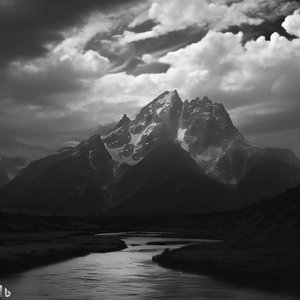

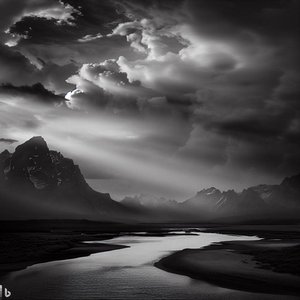

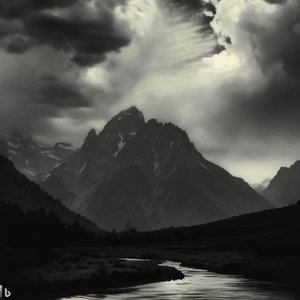



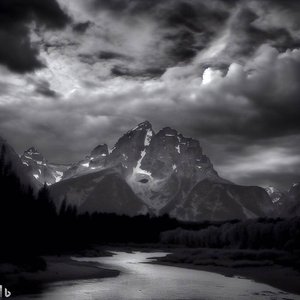

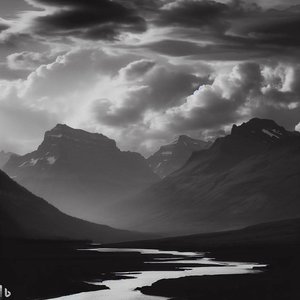



Comments